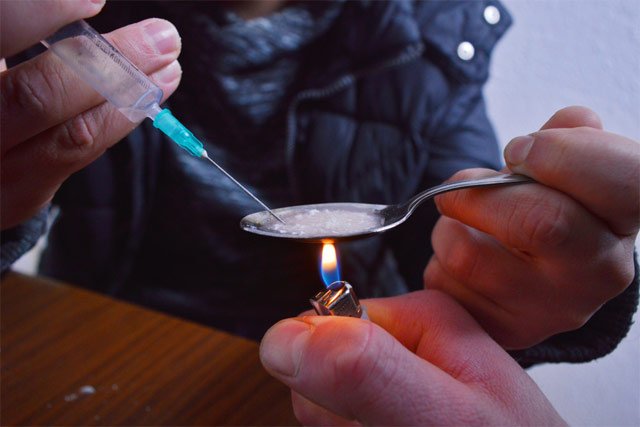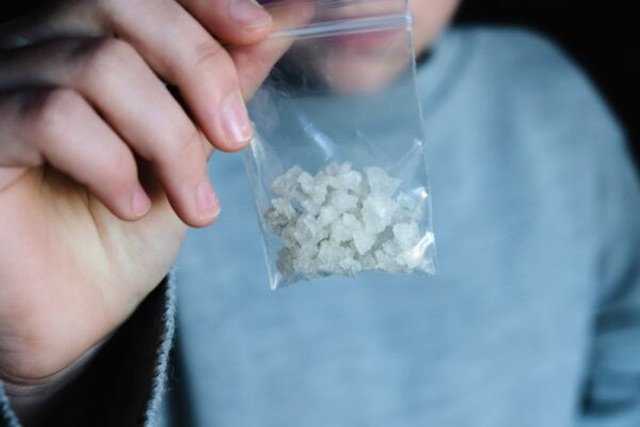Methamphetamine, commonly known as meth, is medically used to treat ADHD and as a short-term treatment for obesity. It goes by street names such as ice, crank, crystal, and speed. Meth is highly addictive. It’s the second most popular illicit drug in the world after marijuana and is classified as a Schedule II drug in the US due to its high misuse potential.
Determining how long Meth is detectable in your system depends on the type of test used and a person’s physical qualities. It can be detected for a shorter period with certain tests and up to three months in others.
In this article, we will discuss how long Meth stays in your system, whether it will show up on different drug tests, and what factors influence the time meth will remain in your system.
How Long Does Meth Stay in Urine?
The amount of time Meth stays in your body can significantly vary. Factors such as your usage, regular patterns, and metabolism rate will impact Meth’s duration. Typically, the body must have ample time to break down the drug. The amount of time the body requires to break down the substance by half is referred to as the half-life of a drug.
Meth remains in the body for approximately 10-12 hours, which is much longer when compared to other drugs. Meth similarly has a considerable variation in the rate at which different parts of the body accumulate it.
Some parts of the body tend to metabolize the drug at a faster pace than others. The liver metabolizes a substantial portion of the ingested Meth, and it takes roughly 75 minutes to get rid of it completely.
However, other parts of the body, such as the lungs and the heart, take around 7-17 minutes to clear. Other parts of the body, such as the spleen, pancreas, and the kidneys, take approximately 22-50 minutes to metabolize Meth fully.
In the United States, Methamphetamine is categorized as a Schedule II drug, implying it is a drug with high misuse potential and can cause severe physical and psychological dependence.
Although Meth can be used for medical purposes, the drug is often abused. Research conducted in the United States indicated that approximately 0.7% (1.9 million) Americans 12 years and older consumed methamphetamine.
Administration Process of Meth

Methamphetamine is usually injected or smoked using a small glass pipe. Regardless of the method used for ingestion, it reaches the brain quickly and stimulates the central nervous system. Injections are faster than smoking because it allows Meth to travel directly into the blood and into the brain.
However, smoking crystalline, a purer form of methamphetamine commonly referred to as crystal meth, produces an intense “high” similar to that of crack cocaine but longer lasting. After consumption, you can expect intense pleasurable sensations, a feeling commonly known as “flash” or “rush.”
Nonetheless, the drug can also be ingested through snorting via the nose or oral process, resulting in a long-lasting highness. The feeling is often characterized by escalated physical activity lasting half a day but not as intense as a rush.
The Initial High & Rush
A majority of people ingest Meth to enjoy the high feeling associated with it. Depending on the means of administration, a person’s tolerance, and the dosage taken, experiencing its effects can occur within minutes.
The time in which the high effect lasts is ultimately 12 hours. However, even after the high effect fades away, Meth will remain in your body for an extended period of time and can be detected.
Meth Withdrawal
During the process of drug detox or after ceasing from ingesting the drug, your body begins the meth-metabolism process. During this period, the abuser starts to experience withdrawal symptoms and may require meth addiction treatment. The withdrawal symptoms vary depending on the severity of the condition, with chronic symptoms typically lasting as long as three weeks.
Methamphetamine Symptoms
Experiencing effects associated with Meth begin after injecting or smoking. The primary impact of Meth lasts for at least four to eight hours, but it can go up to 12 hours depending on varied conditions. During drug tests, a methamphetamine metabolite (amphetamine) is detected long after use.
Effects can vary extensively between those who ingest methamphetamine as a therapeutic prescription and those who use it for recreational purposes. When given a 10-30mg prescription, the dosage ensures better functionality, eases fatigue, and improves subjective alertness.
Methamphetamine causes the brain to release excess amounts of dopamine, which leads to a tremendous feeling of pleasure and motivation. When used in the right dose, Meth is safe, but misuse causes the following adverse effects:
- Inattention
- Agitation
- Depressed reflexes
- Incapacity to follow instructions
- Incapacity to have a focus on various divided attention tasks
- Poor coordination and balance
- Time distortion
- Motor excitation
- Restlessness
- A surge in reaction time
Meth and Alcohol
Alcohol, to a great extent, affects the longevity of Meth in the body system. Both Meth and alcohol should not be used together. Some people believe it’s possible to reverse alcohol impairment after ingesting Meth. Nevertheless, research conducted by NHTSA disclosed there is no restoration of alcohol-inflicted steadiness and balance deficits after using Meth.
Will Meth Show Up On a Drug Test?
Breaking down methamphetamine is carried by an enzyme in the liver and excreted in the form of urine by your kidney. The metabolism process produces 4-hydromethamphetamine and amphetamine.
Multiple methods of drug testing differ in the approximate time range or detection window. The approximate detection window for urine, blood, saliva, and hair meth tests is as follows:
Urine Test

A urine test can detect Meth roughly 2-5 hours after ingestion. However, the drug can be detected for up to 3-7 days for heavy users. Compared to all other tests, the urine test displays meth concentration in a higher amount because all the metabolites of the drug (4-hydromethamphetamine and amphetamine) are eliminated through urine.
Blood Test
This method of testing quickly detects meth concentration within 1-2 hours of ingestion. However, more advanced equipment can still detect Meth 1-3 days after use.
Saliva Test
This method of detecting Meth is so quick that it shows the drug concentration within 30 minutes after ingestion. Meth can still be detected for 1-4 days after the most recent dose.
Hair Test
The hair follicle test can detect meth concentration in your system for up to 90 days following the last use.
What Factors Influence the Time Meth Will Stay in Your System
- Frequency of use – Those individuals who frequently use methamphetamine will experience longer detection times than those using it sparingly.
- The overall health of an individual- Detection of Meth in the body system gets affected by the general health of a person, including how your kidney and liver function. Those with deteriorated health who still using the drug tend to have longer extended detection periods than those whose body organs work correctly, which speeds up the excretion process.
- Metabolic Rate- The metabolism rate is greatly affected by an individual’s level of activity, overall health, and age. Those with fast metabolisms experience a fast excretion of meth by-products, such as amphetamine, than individuals with a less quick metabolism.
- Injection & Smoking- Taking the drug intravenously or orally affects the time the drug will stay in the body system. Oral consumption of Meth causes the elimination to get faster than injecting the drug.
- Other factors – They include the type of drug testing, the amount of dosage taken last, and alcohol consumption.
Bottom Line
Abuse of methamphetamine is hazardous to your health. If you or your loved one are going through addiction, seek immediate treatment. The earlier a person seeks treatment, the easier it is to recover!




